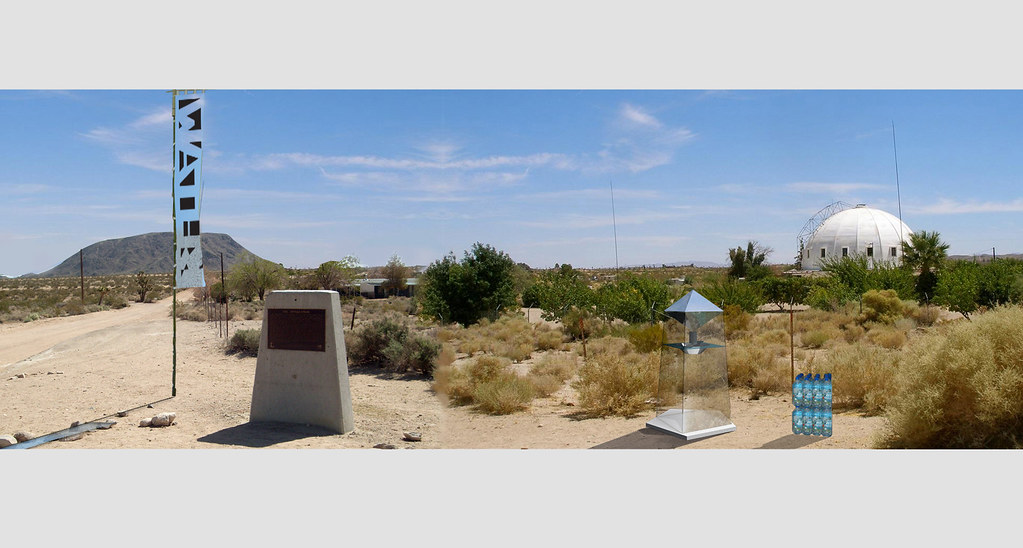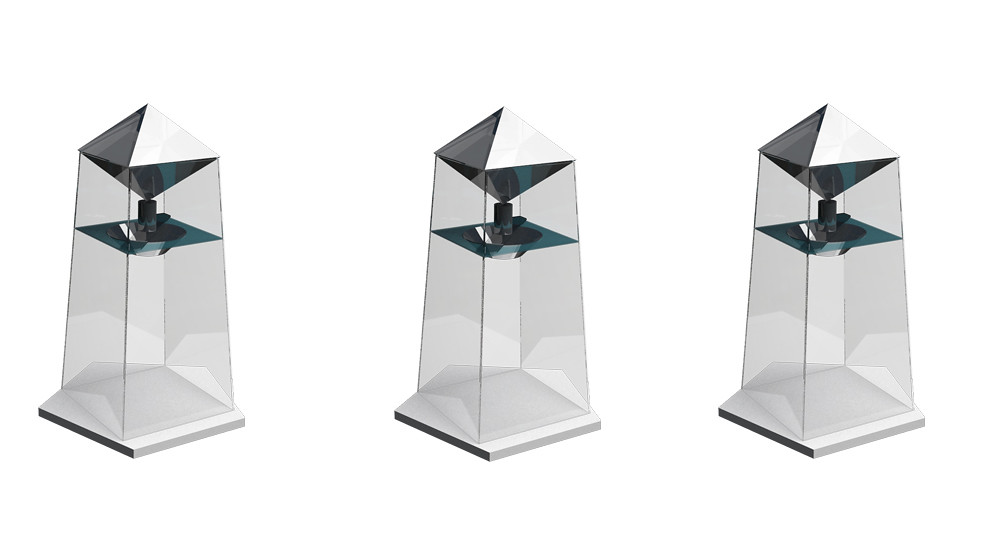"Intersections of public and private enterprise, interaction and perception. It’s the structural dynamics of systems and how we see them that’s the fuel for the work. It’s success is in enabling a viewer to leave with an insight or better lit understanding of the dynamics at play in nature, the systems around them, and be able to apply that to how they see the world around them."
-Claude Collins-Stracensky

High Desert Test Sites "To find common ground between contemporary art and localized art issues. To contribute to a community in which art can truly make a difference. HDTS exists in a series of communities that edge one of the largest suburban sprawls in the nation. Many of the artists who settle in this area are from larger cities, but want to live in a place where they can shape the development of their own community. For the time being, there is still a feeling in the air that if we join together we can still hold back the salmon stucco housing tracts and big box retail centers. Well maybe."

From where did you arrive at the idea of your HDTS installation?
I'm always acutely aware of water when I'm in the desert. I'm made to feel very porous hiking out there. HDTS is a great context and opportunity to work with how we use water (something I've been working with more lately). The particulars of the sculptures came from a survivalist technique I came across a while back that with three simple things you can make distilled potable water from your own urine, and survive in the desert for some time.
Describe your project for HDTS 2011
I’m making two glass Obelisks that function as public water distillers, or water fountains for the arid climate. The ‘fountains’ look at our understanding and relationship with public sculpture and our relationship with water. Installed as permanent structures, they will act as markers to the ingenuity and resilience we have for aesthetic adaptation to our environments and circumstances. the fountains function as public water distillers powered by the sun. Using the method of vapor distillation, the ‘fountains’ purify liquids contained in the “grey water” basin – liquids such as contaminated water from plastic bottles left in the sun, “grey waters” like saltwater, to even human urine, are converted into potable H2O.
The design of the ‘fountains’ allows “grey water” to evaporate from the basin and collect on the inner lid of the sculpture. The condensed evaporation is collected through gravity and funneled into a cup by the ‘V’ shaped inner lid. Within an hour or so in desert conditions, a full cup of distilled water can be safely poured into your personal water canteen and drunk. Instruction glyphs will be etched on the sculptures side to instruct the user on how to interact and use the ‘fountains’.
Where specifically are these works located?
Two Sculptures in two spots. One near the HDTS Office in Downtown Joshua Tree, and the other deep in the Wash Hiking Trail in B.L.M. desert, in a place you could find yourself really needing water. -
Is there a story behind this work?
There is a quasi-narrative I suppose - or a structuralist framework that will be played out each time the work is encountered and interacted with – the work will bring out individual characteristics in how each person utilize or interact with the work, specifically, how they see themselves in relationship with their neighbors and community. The work sets up the potential for some very intimate encounters with our instincts for survival, both personal and communal, with water as a resource for communal and/ or personal usage/ survival. The sculptures can be used for the good of the next guy or for your personal survival, and how you interact with it, how you leave it, will show you something.

What are the materials?
They’re glass, reclaimed architectural skyscraper glass and new food safe glass for the functional parts. The top is mirrored to reflect light for visual marking from a distance, and is functional keeping the condenser lid cooler than the base to encourage a quicker evaporation and condensation return. There are a few stainless steel parts for function as well – or an overall look of a very peculiar Tech-Egyptian looking device that will need to be explored first hand to be understood.
How would you personally describe High Desert/Mojave area?
Sublime, speckled with Stucco.
Is your work a permanent installation? And if so, how will it change with time? Will the harsh environment of the desert play a factor?
We are fundraising through USA Projects now to enable donating the two works to HDTS and the town of Joshua Tree. We aim to make the works permanent and to be owned by the community there. We’ve made a group of editions as part of the project, and to help support it. (here) The work is designed to withstand the natural conditions of the desert, though its longevity will be through the care and upkeep by the people who interact with them as a public utility, or monument.
How does your HDTS project relate to your ongoing practice as an artist/designer/etc.?
My work is generated by intersections of public and private enterprise, interaction and perception. It’s the structural dynamics of systems and how we see them that’s the fuel for the work. It’s success is in enabling a viewer to leave with an insight or better lit understanding of the dynamics at play in nature, the systems around them, and be able to apply that to how they see the world around them.
Future projects?
I’m working on creating a rainbow, or breaking down the sun’s light spectrum with water from the Owens Valley in Los Angeles.

Claude Collins-Stracensky was born in Lakewood, Ohio in 1975 and lives in Los Angeles. He received his MFA from the University of Southern California in 2003 and his BFA from the Cleveland Institute of Art in 1997. His solo projects include; the Hammer Museum, Galleria Nicoletta Rusconi in Milan Italy, Kantor/Feuer Gallery in LA, and Los Angeles Contemporary Exhibitions (LACE). In 2003, he had a two-person show at Anna Helwing Gallery in Los Angeles, and has been included in group exhibitions at The Museum of Contemporary Art PDC, Los Angeles; Cherry&Martin, Los Angeles; Sister Gallery, Los Angeles; Le Magasin, Grenoble, France; and Taxter & Spengemann, New York, among others. Working under the CollectiveField he coordinated Spatial Expanse, The Oneness and The Suchness, a performative event at The Hammer Museum in connection with his solo show there. He has also participated in a number of group performances, including 88 BoaDrum with the Boredoms at the Los Angeles County Museum of Art and Into The Vacuum at the Hammer Museum with Jim Shaw. Collins-Stracensky is currently working on solo, public, and group projects in Los Angeles, Milan, San Francisco, and New York, as well as projects with the CollectiveField.
HDTS 2011 October 15-16
Take a day-trip to Joshua Tree today.... Get lost, refuel the mind.
---------------------
----------------------
